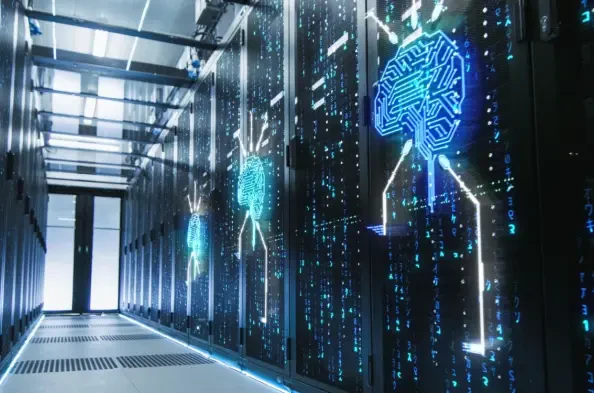Amid the increasing integration of artificial intelligence (AI) into various technological systems, a recent report underscores significant environmental concerns. Commissioned by Greenpeace and crafted by the Öko-Institut, the study identifies unchecked data center growth as a potential hindrance to achieving green energy transitions. It exposes how unregulated expansion could intensify reliance on fossil fuels, thereby obstructing progress in renewable energy adoption. As AI applications gain prominence and dependency rises, the forecast paints a troubling picture of escalating power demands, predicting a drastic upsurge in energy consumption that may culminate by the decade’s close. The projections illustrate a climb in emissions from AI-enabled data centers, underscoring the pressing need for strategies to curb these environmental risks.
Environmental Concerns of Data Centers
Challenges with Cooling and Raw Material Usage
The environmental impact of data centers is multifaceted, posing challenges such as excessive water usage for cooling systems and increased production of electronic waste. As the demand for data storage and processing grows, these centers require substantial resources, including steel and other vital raw materials, to maintain and expand their infrastructure. Such resource-intensive operations contribute significantly to environmental degradation, complicating efforts toward sustainability. Jens Gröger from the Öko-Institut highlights the looming dependence on fossil fuels—particularly natural gas and coal—due to these centers’ energy needs, leading to considerable ecological ramifications. The report articulates concerns that heightened reliance on non-renewable resources to power these infrastructures could further exacerbate environmental challenges, calling for immediate action.
Emissions Trajectory and Fossil Fuel Dependence
The rapid expansion of AI-specific applications raises alarms about potential environmental repercussions, with predictions indicating that such activities could soon surpass crypto mining in terms of climate impact. Data centers, pivotal for AI operation, have been likened to Australia’s situation, where they currently account for 3-5% of national electricity consumption. This figure is poised for a significant jump, leading to a potential revival in fossil fuel usage to meet growing demands. The implications of such trends are concerning, suggesting that without strategic interventions, these centers could undermine efforts toward climate goals through increased emissions and resource consumption. Moreover, projections of emissions surging from recent levels to alarming figures within just a few years underline the urgent need for comprehensive measures.
Policy Recommendations for Sustainable Growth
Enforcing Transparency and Accountability Standards
In light of these findings, Greenpeace proposes a series of policy actions aimed at mitigating the adverse environmental impacts of data center proliferation. One essential recommendation is to enforce transparency and accountability standards, ensuring that data centers adhere to environmental regulations and disclose their energy sources and consumption. Such actions would promote responsible industry practices, fostering a culture of sustainability and environmental consciousness. By establishing stringent guidelines, there is potential to significantly reduce the ecological footprint of these centers, advancing toward net-zero emissions and enhancing global climate efforts. Ensuring that data centers operate with discernible accountability would also pave the way for informed decision-making and improved ecosystem stewardship.
Promoting Grid Integration with Renewables
Another key proposal involves promoting the integration of data centers into the existing power grid using renewable energy. This shift is vital in curbing reliance on fossil fuels and enabling a more sustainable approach to managing rising energy demands. Encouraging investments in renewable infrastructure and updating grid systems to accommodate growing data processing needs are crucial steps toward achieving environmental balance. Such integration can also foster innovation in energy management practices, potentially setting new benchmarks for efficiency and sustainability within the tech industry. By prioritizing renewable energy use through comprehensive policy frameworks, governments can both mitigate environmental challenges and encourage cleaner production practices, leading to enhanced energy transition efforts.
Pathways to Harmonizing AI Growth with Environmental Goals
Updating Legal Frameworks for AI’s Impacts
To counteract the potential environmental fallout from AI data center growth, Greenpeace advocates for updating existing legal frameworks to incorporate AI’s environmental impact assessments. Such provisions would ensure that AI applications are developed with full recognition of their ecological implications, promoting responsible innovation. Establishing legal protocols for evaluating AI’s environmental costs would not only safeguard against unchecked emissions but also foster sustainable technological advancements. These frameworks can guide developers and policymakers in constructing strategies that align AI development with overarching climate objectives, ensuring a symbiotic relationship between technological progress and environmental preservation.
Evaluating Long-term Sustainability Strategies
Greenpeace suggests updating current legal frameworks to address the environmental concerns associated with the expansion of AI data centers. By including assessments of AI’s environmental effects, these regulations would ensure that AI technologies are developed with an awareness of their ecological footprint, promoting responsible innovation in this rapidly advancing field. Introducing legal protocols to evaluate the environmental costs of AI would not only prevent unchecked emissions but also encourage sustainable technological growth. These frameworks can serve as a blueprint for developers and policymakers, guiding them to create strategies that align AI development with ambitious climate goals. The aim is to foster a harmonious balance between technological progress and environmental preservation, ensuring that innovations in AI contribute positively to societal and ecological well-being. This approach ensures that the growth of AI is conscientious, aligning with global efforts to combat climate change and protect our planet for future generations.






